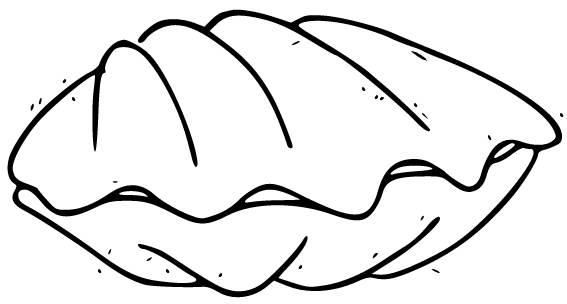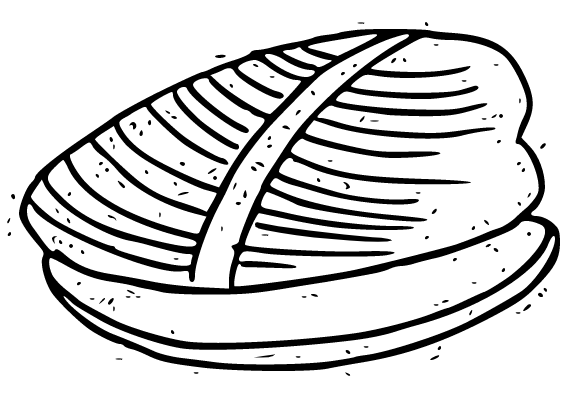-

-
The Discerning Mollusk's Guide to Arts & Ideas
-


The Butterfly Cemetery
Franca Mancinelli (trans. John Taylor)
The Bitter Oleander Press, April 2022
Award winning poet Franca Mancinelli’s The Butterfly Cemetery, translated into English by John Taylor, collects thirteen years of prose writings including fiction, autobiography, and essays on writing. “Poetry, Mother Tongue” points toward one node of its connections, in its evocation of an interdependent relationship between one’s inner reader and writer: “More than in dreaming, the origin of poetry seems to lie on this threshold between sleeping and wakefulness, in which we are given back to ourselves, naked, entirely and now only a gaze, entirely and only listening” (133). In a formal mirroring of these assertions, a common feature throughout this varied collection is the presence of open, unspoken space that allows—in fact, requires—the reader to think through correlations and implications and attend to emotional and psychological resonances, often by immersing themselves both cognitively and emotionally in the experiences of images and scenes. Although there is much more to explore in the collection within themes including childhood, psychological healing, and landscape, I will look closely at several pieces that reflect an overarching interest in various forms of such deep reading, broadly understood.
The short fiction “The Little Girl Who Learned How to Fly” opens with a gesture connecting reading and observation as the girl watches a bird through her window: “The rustling and the small beating sounds it made seemed letters of an alphabet to be deciphered.” Next, she follows it outside: “She looked back into the biggest puddle: there it was, resting on something invisible. She couldn’t help but touch it with her finger, slowly, so that it wouldn’t fly away. But as soon as her finger broke the surface of the water, the bird vanished.” The puddle replaces the window as the lens of viewing the image, a movement that indicates dually an entry into the bird’s own world yet a literal rather than reflected understanding of the image. Finally, while “thinking about where it might be,” the girl transforms into a bird in vivid Ovidian description. In her new form, “She stopped to look down at the garden, the house where she had lived, and headed straight for the blue” (33).
How quickly and seamlessly we have moved from the discovery of the bird whose “text” we needed to learn to read on its own terms, to the illusion of concrete understanding, to full imaginative immersion that transports us not only outside of our home but also outside of the laws of the physical world, to view it from the reflective distance of the imagined perspective we have inhabited. Importantly, the girl’s “thinking” and imagining the bird collaborate in this movement. Given this underlying psychological progression, the story can read as an engaging allegory in which the recursive and reflective reader may perceive themselves in the act of imaginative reading, creating within the psyche a mirror of the text which gives way to a fully imagined one, from which we can see our own world “from the outside” within us. However, inextricable from the moorings of these thoughts are the sensations of the child’s curiosity, the transformation, the heading “for blue,” the exhilaration of imaginative reading and its intrinsic experience of selfhood as the interior exploration of the other. We want to learn from reading, of course, but first the reading must make us want to read.
An autobiographical piece, “Inside a Horizon of Hills,” recalls another sequence of readings, in this case of childhood landscapes:
It did not allow itself to be embraced by reason; it kept eluding me like things traversed by the shock of beauty, like the greatest loves. The object of love is known by reducing it to more understandable and controllable parts; the ruinous flood of passion is held in check by channeling it towards fragments, details. This is why I often isolated trees from that line of hills…. (81)
Here, Mancinelli provides a more objective description of the complementary processes of interpretation and imagination of alterity, located for her childhood self in “this unmarked limit between the plain and the hills” where her “imagination gravitated around this point where two worlds joined” (83). She weaves these memories with the region’s history and literary embodiments in Pavese, whose narratives she credits with offering her the imaginative approach of reading the objects of the landscape thereafter. The ending, from a memory of exploring nighttime fields alone as an adolescent, shows another view of the genuine and palpable surprises that are possible when imaginative reading relocates us, in this case quite literally, within the “text”:
Only the land was tilting, losing all boundaries, entering more and more into the night. A land so dark and devastated that my eyes had to follow every footstep: every moment seemed to surge forth beneath my feet, emerge and withdraw. I was at the beginning of the world. A strange grace kept my hands raised and open, like a scarecrow lingering in the now deserted field. A few minutes of pure emptiness went by. Then I was surprised by the howl of a dog. (85)
In comparison to the bird in the story, the other here is the more macrocosmic, and the mode is memory refracted through lyrical association rather than fictional narration, yet the manner in which reading the external presence informs ongoing experience and perception of the self is complimentary to the first piece, as is the relational sense of excitement and discovery the process itself is imbued with.
Furthering this diversity of reading experiences, “Living in the Ideal City: Fragments in the Form of Vision” is an interactive ekphrasis made up of “fragments in the form of a vision…born from long immersions in the lake of the Ideal City” written by “going and coming back across the threshold of this space that appears and disappears. A space transported and transmuted by thoughts like clouds by the wind” (97). Mancinelli roots the processes of imaginal reading in their interdependent psychological and epistemological contexts: “in this space everything blurs: a daydream within reality, reality within a daydream. Two opposing forces collide: the geometric control and something irreducible to this planned harmony” (95). This work explores another mode of reading in which imaginings and the images that give rise to them alternate roles in the writing like a flexible figure and ground. Working with the images created of another artist’s consciousness presents another experience of the permeable membranes between self and other, conscious and unconscious, and creative work’s provisional presentations of—and open space for—these complexities.
The third section, grouping various experiential and metaphorical views on writing, also includes insights into the role of reading in authorial development and practice, refreshingly, in ways that bypass the vague stoicism or pseudo morality with which reading is often enjoined to young writers. Rather, Mancinelli offers interesting parables that must themselves be read through thought to reach the reader-writer. In “A Line Is a Lap and Other Notes on Poetry” she details the way a waiter reads tables to “ensure that nobody asks for him” and works in cohort, reading eye contact and nods, to maximize the productivity of each member’s movements, concluding: “It sufficed to understand in what way one should write. Or else we will bring books that remain closed, like bottles of water on a table for which only one bottle was needed” (113). The image is at once a pragmatic counsel and a transformative invitation: The books will “remain closed” both in that, practically, reader-writers need to open them to be read, but also because, if reader-writers do not open books, their own books will never “open” themselves with perceptive, engaging, and nuanced work—and then who would want to read them? The teaching challenges the writer to become a deep enough reader to learn from it, evidencing the interconnectedness of the processes in its very mode of communication.
This book isn’t a light read, but certainly a bottle worth opening for readers and, of course, writers and artists, who are deeply aware of and concerned with the practices and implications their imaginative work holds for the psyche, our natural and cultural environments, and, perhaps most mysteriously, their own “reader” with many faces.

Michael Collins is the author of four collections of poetry, most recently Appearances. He teaches at NYU and the Hudson Valley Writers’ Center and is the Poet Laureate of Mamaroneck, NY.